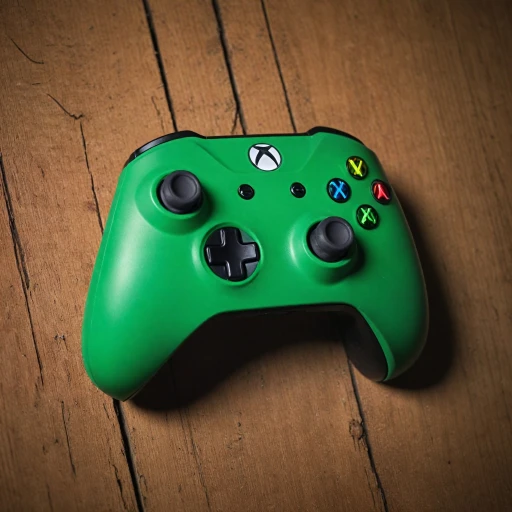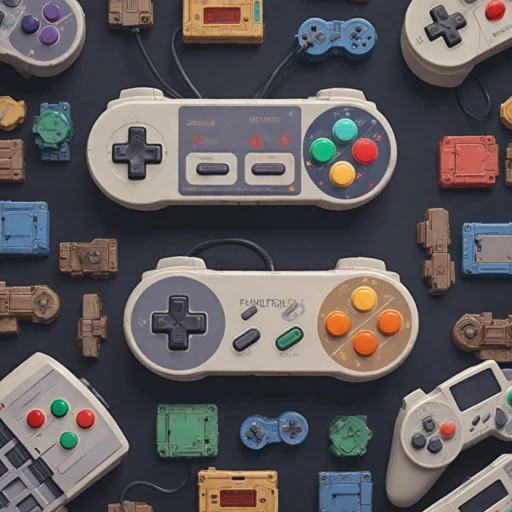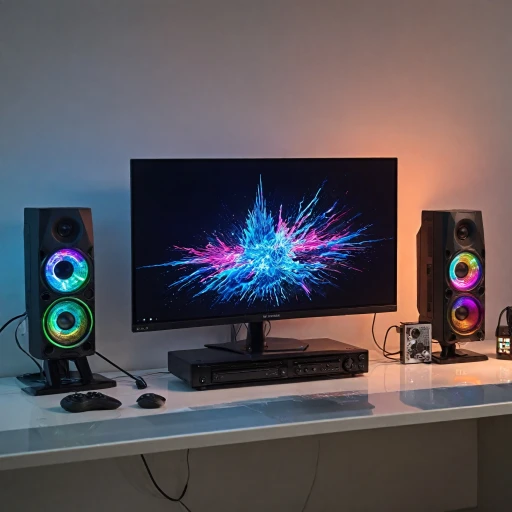
The Birth of TurboGrafx-16
The Emergence of a Gaming Revolution
In the late 1980s, a wave of innovation swept through the world of video games. At the helm was TurboGrafx-16, a console that would leave a lasting imprint on the gaming landscape. Originally launched in Japan under the name PC Engine, it wasn't long before this remarkable console made its way to North America. Developed by NEC in collaboration with Hudson Soft, TurboGrafx-16 promised a new era of gaming advancements.
The introduction of this game console marked NEC’s bold step into a market primarily dominated by Nintendo and Sega. With features that sought to revolutionize the gaming experience, TurboGrafx-16 stood out in several ways. Its super-rom HuCard format provided a compact means to deliver groundbreaking games that resonated with fans and fueled collections in markets such as Japan and beyond. Moreover, its design was a departure from the bulky cartridges of its competitors, making it a visually appealing alternative.
TurboGrafx-16’s emergence in the United States came at a time when video game consoles were becoming more mainstream. As it maneuvered through a competitive landscape brimming with titans like the Sega Genesis and later systems like Neo Geo, TurboGrafx-16 carved out its niche—not only through tech but also with a comprehensive lineup of video games.
Interested in exploring how this console stacks up in the realm of electronic entertainment? Check out the world of electronic gaming from a broader perspective and see the role of TurboGrafx-16 in shaping it.
Technical Innovations and Features
Revolutionary Hardware and Format Innovations
When examining the technical innovations of the TurboGrafx-16, it’s crucial to acknowledge the groundbreaking advancements that set this console apart from its contemporaries. Developed by NEC in collaboration with Hudson Soft, the TurboGrafx-16 was initially launched in Japan in 1987 under the name PC Engine. Its architecture demonstrated a distinct shift from other video game consoles of its time. One of the most notable advantages of the TurboGrafx-16 was its ability to render colorful and detailed graphics, arguably superior to its primary competitors: Nintendo's NES and Sega's Master System. The system featured an 8-bit CPU accompanied by a 16-bit graphics processor, a combination that allowed for vibrant visuals and fluid video game animations. This innovation offered gamers an unprecedented experience in graphics department, setting a pivotal milestone in console design. Furthermore, the TurboGrafx-16 introduced a unique and compact game format known as the HuCard. These credit card-sized cartridges, developed by Hudson Soft, allowed for easy handling and storage—unlike the bulky cartridges of other game consoles. This format contributed to a streamlined design and was compatible with the console’s sleek aesthetic. In terms of audio, the TurboGrafx-16 supported stereo sound, enhancing the overall gaming experience. This was a considerable upgrade from other consoles that often had limited mono audio capabilities, allowing games to feature richer soundtracks and more immersive gameplay atmospheres. For those interested in discovering the standout titles that everyone still talks about, it might be worth exploring the top TurboGrafx-16 games for enthusiasts. These advances positioned the TurboGrafx-16 competitively in the marketplace, though it faced stiff challenges from both Nintendo and Sega as discussed in other parts of this analysis.Iconic Games and Titles
Unforgettable Gaming Moments and Memorable Titles
The TurboGrafx-16, a distinctive force in the world of game consoles, boasts an impressive lineup of games that solidified its place in the annals of gaming history. Although it faced fierce competition from giants like Nintendo and Sega, the TurboGrafx-16 still carved out a niche thanks to its unique catalog. This console, developed by NEC and Hudson Soft, was home to an array of titles that captured the imagination of gamers around the globe. In Japan, where the system was known as the PC Engine, titles like "R-Type" and "Bonk’s Adventure" became synonymous with the console itself. Bonk, the quirky caveman, emerged as an unlikely mascot and a fierce competitor to Mario and Sonic. R-Type, on the other hand, was celebrated for its challenging gameplay and visually stunning experience, showcasing what the Turbo's engine could achieve. Another defining element of the TurboGrafx-16 was its support for the innovative HuCard format. These credit card-sized cartridges allowed for a host of video games to be easily stored, distributed, and swapped among gamers, paving the path for a diverse gaming library. Iconic titles such as "Ninja Spirit" and "Military Madness" are remembered fondly for their engaging narratives and complex gameplay mechanics. A clear testament to Hudson Soft's prowess, "Bomberman '94" was another flagship game that remains influential, offering multiplayer action that kept players on the edge of their seats. In the backdrop of the console wars, beloved classics like "Ys Book I & II" consolidated the TurboGrafx-16 as a haven for role-playing games, offering lush soundtracks and engrossing storylines. Additionally, with companies like Konami contributing to its repertoire, games like "Castlevania: Rondo of Blood" gained cult status for its gameplay fidelity and retaining the atmospheric essence of the franchise. Despite facing stiff competition, the unique engine turbo of the TurboGrafx-16 allowed it to boast a diverse super collection of games that eased its transition into the modern age. Many of these gems are preserved and celebrated in modern compilations like the TurboGrafx Mini, which reintroduces these classics to a new generation of gamers, just like how the Sega Genesis Mini reimagines the glory days of its iconic games. For collectors and enthusiasts, the TurboGrafx-16 remains a prized component in any retro gaming collection. The pursuit for pre-owned titles like "Splatterhouse" or "The Legendary Axe" with free shipping options showcases the enduring demand for such nostalgic treasures in the ever-expanding realm of video game history.Market Competition and Challenges
Facing Tough Rivals in the Market
The TurboGrafx-16 found itself in the midst of fierce market competition upon its release. Notably, its main rivals were the Sega Genesis and the Super Nintendo Entertainment System (SNES), both of which had established a strong foothold in the gaming console sector at the time. Each boasted a diverse library of games and powerful hardware specs, which presented significant challenges for the TurboGrafx-16.
Despite its impressive features, including the advanced graphics engine and the innovative HuCard format, the console found it difficult to secure a larger share of the market. Hudson Soft, in collaboration with NEC, had a strategy that emphasized unique and engaging video games. However, this approach struggled against the substantial marketing budgets and established reputations of companies like Nintendo and Sega. Both of these rival giants had substantial collections of popular game titles and immense brand loyalty among consumers.
The situation was further complicated by the TurboGrafx-16's delayed entry into the North American market. Initially successful in Japan as the PC Engine, the console's impact was less pronounced on a global scale, partly due to these delays. By the time the TurboGrafx-16 launched in North America, the Sega Genesis and SNES already had a significant market presence.
Additionally, the competitive landscape was further intensified by the presence of other players, like the Neo Geo, which offered a different gaming experience. Each console had its own strengths, but the early 1990s proved to be a challenging era for any system trying to dethrone the major players. The abundance of choices in video games and game consoles partly defined consumer preferences, and free shipping offers by some retailers could sway purchasing decisions.
In retrospect, while the TurboGrafx-16 did enjoy a dedicated following among enthusiasts, it could not outpace the growth and influence of its more dominant competitors. Its legacy, however, endures through the dedicated community of collectors and the introduction of the TurboGrafx-16 Mini, which revived many classic titles and rekindled interest among retro gaming fans.
Cultural Impact and Legacy
The Influence on Global Gaming Culture and Fanbase
Despite its challenging competition against gaming giants like Nintendo, Sega, and later, the Sega Genesis, the TurboGrafx-16 managed to carve out its niche in the gaming world, leaving a lasting cultural impact. While not as dominating as its rivals, the system found a fervent fanbase, particularly among gamers seeking unique and innovative titles. The TurboGrafx-16 is often hailed for its pioneering use of the HuCard format, a distinct departure from the traditional cartridge designs of the era.
This console was also critical in fostering a subculture of gaming enthusiasts who appreciated its library of games, including collaborations with companies like Hudson Soft and popular titles by Konami. These releases showcased a diverse range of genres, from action-packed adventures to RPGs, that remain part of many retro game collections today.
A Cult Classic Status in Retrospective
Over time, the TurboGrafx-16 gained a cult status among retro gaming collectors and aficionados. Its rarity, coupled with a distinctive game lineup, has turned it into a sought-after piece of video game history. Modern collectors find great value in pre-owned systems and games, particularly in regions like North America where the console initially struggled to compete directly with Nintendo and Sega.
The popularity of the TurboGrafx-16 has persisted, aided by releases like the TurboGrafx Mini, which introduced these classic titles to a new generation and rekindled nostalgia in those who gamed during its prime. Video game enthusiasts around the world remain passionate about its legacy, contributing to forums and quote posts celebrating its unique contributions to gaming history.
Resurgence of Interest and Preservation Efforts
The digital age has ushered in new methods of preserving classic gaming systems like the TurboGrafx-16. Emulation, including super ROM capabilities and engine core advancements, plays a crucial role in keeping the games accessible to fans old and new. While hardware preservation remains vital, these digital techniques ensure that fans can experience original video content without deterioration from time.
Free shipping offers on retro gaming platforms, and an increasing interest in video game history, have also helped perpetuate the TurboGrafx-16's appeal. Collectors and enthusiasts alike continue to seek these consoles and their game libraries, maintaining a thriving market for this iconic piece of gaming history.












